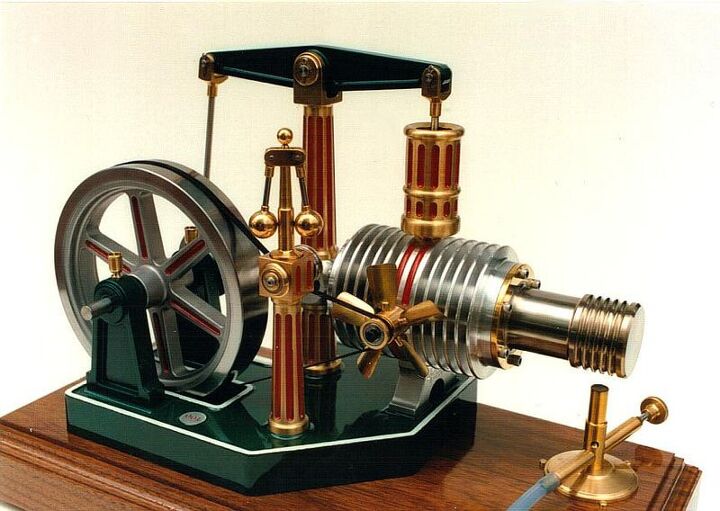Volt Gen2 Range Extender: The Field Of Infinite Engine Possibilities

GM’s decision to use its off-the-shelf 1.4 L four as the range-extender power source was a compromise born of necessity. The originally conceived 1.0 L turbocharged three cylinder engine didn’t exist (in the US), and GM’s pre-bankruptcy budget was a little constrained to spend the bucks for the tooling. The 1.4, in a different state of tune, is shared with the Cruze, as is as much of the rest of the car as possible. GM has made it pretty clear that the gen1 Volt is a bundle of compromises, given the time, technology and budget constraints it faced. But the gen2 is apparently another story. In an echo of GM past, Volt Vehicle Director Tony Posowatz tells Automotive Engineering that the engine options are wide open; way way wide open:
“That may be a Stirling cycle engine, perhaps it’s a Wankel, a gas turbine, a small displacement motorcycle engine– you can extend the possibilities to a lot of different alternatives.”
Aw come on Tony, this isn’t Popular Science of the sixties anymore. Unless the gen2 Volt is a lot longer off than the usual model cycle, isn’t it a bit late to be dusting off the Stirling cycle programs from back then? Or is this just the same old GM routine of seeding mid-engine Corvette rumors for the last five decades? I’m betting on the Wankel, because the tooling for GM’s Wankel engine is probably still in a warehouse somewhere.

More by Paul Niedermeyer


































Comments
Join the conversation
So we should expect this gen II Volt to cost about 80 grand (before added dealer markups) then?
this is a stupid question, and a bit off topic, but perhaps somebody can take me to school. Why can't someone take regular engine, but instead of a turbocharger, use a small turbine from the exhaust gas to produce electricity? I understand that wouldn't work with the Volt, serial hybrid blah blah, but as a mild hybrid you could take off the accessory belt and run the power steering, alternator, AC and everything else off electricity. Or add a second turbine behind the turbocharger if you really need the increase in air density.
@carve; thanks -- I knew somebody here would point me in the right direction.
How about this? A small (and I mean small) high speed three cylinder diesel of about 1 litre running at "best efficiency" RPM - or cycling off; powering a hydraulic pump; attached by high pressure lines to a 5 or 6 gallon globe; in which there is a diaphragm separating nitrogen from hydraulic fluid; computer controls to run it, and hydraulic pump/motors on each wheel. You therefore have a super-efficient all-wheel drive diesel-hydraulic-hybrid of (relatively) low cost using virtually no to very few "rare earth minerals" which can be run on bio-diesel (see www.changingworldtechnologies.com), diesel from oil, peanut oil, diesel from coal, etc. Not to mention the fact that the fuelling infrastructure is already in place and mechanics already have a clue about working on diesel engines. Just a thought....